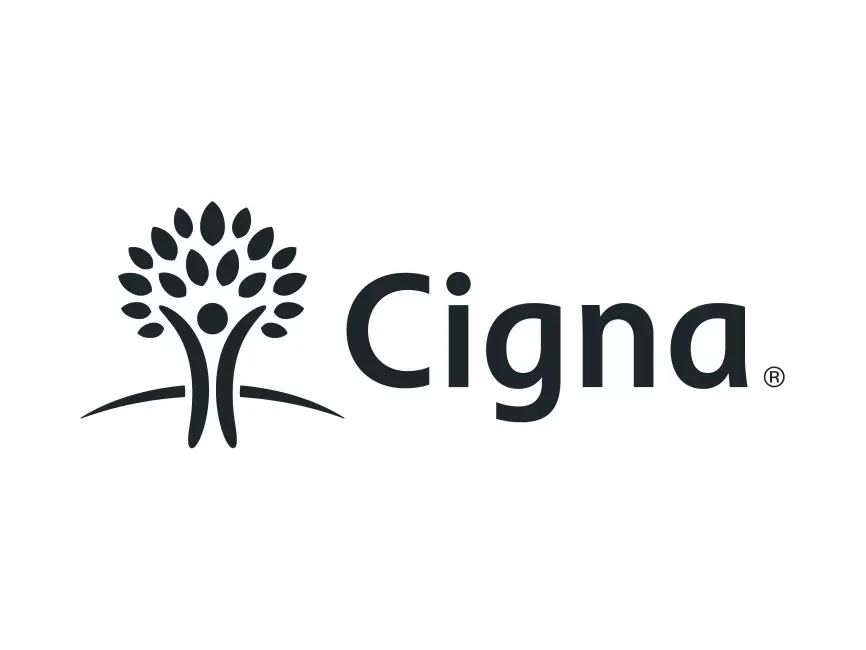Understanding Mindfulness Meditation
Mindfulness meditation is a practice rooted in ancient traditions, yet its application in modern healthcare, particularly mental health and addiction treatment, is a testament to its universal effectiveness. At its core, mindfulness is a state of active, open attention to the present moment. When we practice mindfulness meditation, we are intentionally cultivating this state. This usually involves sitting quietly and focusing our attention on a specific anchor, such as the breath, bodily sensations, sounds, or even thoughts and feelings as they arise. The key is to observe these phenomena without judgment or the need to change them.
The core principles of mindfulness meditation include:
– Non-Judgment: Observing thoughts, feelings, and sensations as they are, without labeling them as “good” or “bad.” Recognizing the internal experience without criticism.
– Patience: Understanding that the mind will wander, and that developing mindfulness is a gradual process. Being patient with oneself and the practice.
– Beginner’s Mind: Approaching each moment, each breath, each sensation, as if experiencing it for the first time, with curiosity and openness.
– Trust: Trusting one’s own experience and intuition. Trusting the process of mindfulness and recovery.
– Non-Striving: Not trying to achieve a specific outcome or a state of perfect calm. Simply being present with what is.
– Acceptance: Acknowledging and accepting the present reality, including difficult thoughts, feelings, or physical discomfort. Acceptance is not resignation, but a willingness to face what is happening.
– Letting Go: Releasing the tendency to cling to pleasant experiences or push away unpleasant ones. Gently letting go of distracting thoughts as they arise and returning attention to the chosen anchor.
Understanding these principles is crucial because mindfulness meditation is not about emptying your mind or achieving a state of bliss. It’s about training your attention and awareness. When you sit down to meditate, your mind will wander. Thoughts about the past, worries about the future, to-do lists, judgments about the practice itself – all will likely arise. The practice isn’t failing when this happens; the practice is noticing that your mind has wandered and gently, without self-reproach, guiding your attention back to your chosen anchor. This act of noticing and returning is the core muscle being strengthened in mindfulness meditation.
How does mindfulness meditation differ from other types of meditation? While many meditation practices aim for focused concentration or transcendental states, mindfulness meditation emphasizes open awareness and acceptance. Some meditations might involve chanting, visualization for specific goals, or contemplation on particular philosophical or spiritual texts. Mindfulness meditation, while it can have profound spiritual or psychological effects, primarily focuses on the direct, non-judgmental experience of the present moment. It’s less about what you focus on and more about how you relate to whatever arises in your awareness – with curiosity, kindness, and acceptance. This distinction makes mindfulness particularly effective in addiction recovery, where the ability to observe difficult internal states without reacting impulsively is paramount. It’s a practical skill for navigating the inner landscape of craving, emotional pain, and intrusive thoughts that can derail recovery. Compassion Recovery Center integrates these practical mindfulness techniques into its
Intensive Outpatient Program (IOP) and
Partial Hospitalization Program (PHP), delivered remotely for ease of access. For those seeking treatment in the Southern California area, especially needing flexible options like an
Orange County IOP they can attend from home, understanding mindfulness is a powerful first step.
The Role of Mindfulness in Addiction Recovery
Addiction is often described as a disease of disconnection – disconnection from oneself, from others, and from the present moment. It thrives on automatic reactions, avoidance of discomfort, and getting lost in cravings or destructive thought patterns. Mindfulness directly counters these mechanisms by fostering reconnection and conscious choice.
One of the most significant roles mindfulness plays in addiction recovery is in helping individuals recognize and manage triggers. Triggers can be external (people, places, things) or internal (thoughts, feelings, memories). For someone in recovery, encountering a trigger can feel like an automatic cascade of thoughts and physical sensations that quickly lead to cravings and the urge to use. Mindfulness teaches you to pause. Instead of immediately reacting to the trigger with the ingrained response (seeking the substance), you learn to notice the trigger and the subsequent internal experience. You might observe the first subtle signs of anxiety in your chest, the specific thought (“I need a drink to relax”), or the physical sensation of a craving in your body. With mindfulness, you create space between the trigger and the reaction. You learn to witness these internal events without judgment, recognizing them as temporary states that will pass. This practice weakens the automatic link between trigger and use, giving you the opportunity to choose a different response – perhaps using a coping skill learned in therapy, reaching out to a sponsor or therapist, or simply riding out the wave of the craving mindfully. This ability to observe without reacting is a cornerstone of relapse prevention, and a core component of effective
virtual rehab California programs.
Mindfulness also has a profound impact on emotional regulation and stress reduction. Substance use is often a maladaptive coping mechanism for difficult emotions and stress. People use drugs or alcohol to numb pain, escape anxiety, or boost low moods. Recovery requires learning healthier ways to manage these feelings. Mindfulness teaches you to be present with emotions, even uncomfortable ones, without being overwhelmed by them. By practicing observing emotions like sadness, anger, or fear as temporary states in the body and mind, you learn that you can tolerate them without needing to change them with substances. This ability to sit with discomfort builds emotional resilience. Furthermore, many mindfulness practices, particularly those focused on the breath or body, activate the body’s relaxation response, directly counteracting the physiological effects of stress. Chronic stress is a major risk factor for relapse, and mindfulness provides a powerful, drug-free way to reduce stress levels and promote a sense of calm. This is especially vital for clients accessing
telehealth addiction treatment, who are often managing the stresses of daily life alongside recovery.
Enhancing self-awareness and self-compassion are other critical benefits. Addiction often involves a distorted self-image, fueled by guilt, shame, and negative self-talk. Mindfulness encourages you to observe your thoughts and feelings with curiosity and acceptance, extending the non-judgmental awareness you practice towards meditation anchors to yourself. You begin to notice negative thought patterns (“I’m worthless,” “I’ll never change”) without believing them implicitly. This increased self-awareness helps you understand the roots of your struggles and identify patterns of thinking and behavior that contribute to substance use. Simultaneously, practices like loving-kindness meditation (which we’ll discuss later) specifically cultivate self-compassion. Recovery is messy; there will be setbacks, difficult days, and mistakes. Self-compassion is the ability to treat yourself with the same kindness, understanding, and acceptance you would offer a friend struggling. It involves recognizing that suffering is part of the human experience and offering yourself comfort and care rather than harsh criticism. This self-compassionate stance is essential for healing from the wounds of addiction and building a foundation of self-worth necessary for long-term recovery. Compassion Recovery Center emphasizes integrating these principles into their
Dual Diagnosis Treatment programs, recognizing that mental health conditions often co-occur with substance abuse, and self-compassion is key to healing both. If you’re struggling with addiction and co-occurring mental health issues, explore how our integrated, remote approach can help by reaching out to
get help now.
Key Mindfulness Meditation Practices for Addiction Recovery
While the core principle of mindfulness remains the same across different techniques – present moment awareness without judgment – various practices emphasize different anchors or intentions. Several types of mindfulness meditation are particularly beneficial in the context of addiction recovery.
Focused Attention Meditation: This is perhaps the most common starting point for mindfulness practice. It involves choosing a single object or anchor to focus your attention on, most commonly the breath. You might pay attention to the sensation of the breath entering and leaving the nostrils, or the rising and falling of the abdomen. The practice isn’t about holding your attention perfectly on the breath; it’s about noticing when your mind wanders (which it will!) and gently bringing your attention back to the breath. This repeated act of noticing wandering and returning strengthens the ‘attention muscle’.
– Techniques: Find a comfortable seated position. Close your eyes gently or soften your gaze. Bring your awareness to your breath. Notice the physical sensations associated with breathing – the coolness of the inhale, the warmth of the exhale, the movement of the chest or belly. When you notice your mind has drifted to thoughts, worries, or sounds, simply acknowledge where your mind went without judgment, and gently guide your attention back to the sensation of the breath. Start with short sessions (5-10 minutes) and gradually increase the duration.
– Benefits for Addiction Recovery: This practice directly trains the ability to focus and redirect attention, which is invaluable when dealing with intrusive thoughts or cravings. By practicing bringing your attention back to a neutral anchor like the breath, you learn that you don’t have to follow every thought or act on every urge. It builds mental discipline and the capacity to pause before reacting.
Body Scan Meditation: This practice involves systematically bringing your attention to different parts of your body, noticing physical sensations without judgment. It helps reconnect you with your physical experience, which can be challenging for individuals who have used substances to numb or escape bodily feelings.
– Techniques: Lie down comfortably on your back, or sit if lying down isn’t possible. Close your eyes. Bring awareness to your body as a whole, then gently guide your attention to your toes. Notice any sensations there – tingling, pressure, warmth, coolness, or lack of sensation. Simply observe. Then, gradually move your attention up through your feet, ankles, lower legs, knees, upper legs, pelvis, lower back, abdomen, upper back, chest, fingers, hands, wrists, forearms, elbows, upper arms, shoulders, neck, face, and finally the top of your head. Linger in each area for a few moments, just noticing. If your mind wanders, gently bring it back to the part of the body you intended to focus on.
– Benefits for Addiction Recovery: The body scan helps increase awareness of physical sensations associated with emotions or cravings. Often, cravings manifest as specific physical feelings (restlessness, tension, emptiness). By practicing the body scan, you become more attuned to these signals and can learn to recognize them early, before they become overwhelming. It also helps reduce physical tension often held in the body due to stress and trauma, common factors in addiction. It encourages being ‘in’ your body rather than trying to escape it, fostering embodiment which is crucial for recovery.
Loving-Kindness Meditation (Metta Meditation): This practice cultivates feelings of warmth, compassion, and friendliness towards oneself and others. It’s particularly powerful for addressing the shame, guilt, and isolation that often accompany addiction.
– Techniques: Find a comfortable seated position. Close your eyes. Begin by directing loving-kindness towards yourself. You can use specific phrases, repeating them silently or softly to yourself: “May I be happy. May I be healthy. May I be safe. May I be free from suffering.” Dwell on the feeling these phrases evoke. Once you feel a sense of warmth or ease towards yourself, extend these wishes outwards – first to someone you care about, then to a neutral person, then to someone you might have difficulty with, and finally to all beings. You can use the same phrases or adapt them: “May you be happy. May you be healthy. May you be safe. May you be free from suffering.”
– Benefits for Addiction Recovery: Loving-kindness meditation directly addresses the self-stigma and negative self-talk prevalent in addiction. It helps build self-compassion, allowing you to forgive past mistakes and cultivate a sense of inherent worthiness. Extending compassion to others helps break down feelings of isolation and can improve relationships, which are vital for a strong support system in recovery. It can be particularly helpful in virtual settings, like
remote IOP, where clients might feel physically distant from their support network; this practice can help foster connection internally.
Mindful Breathing Exercises: While breathing is often the anchor for focused attention, specific breathing exercises can be used more actively to manage acute distress, anxiety, or intense cravings.
– Techniques: Simple techniques include deep abdominal breathing (breathing into the belly rather than shallow chest breaths), counting breaths (inhale for 4, hold for 2, exhale for 6), or box breathing (inhale 4, hold 4, exhale 4, hold 4). The focus is on regulating the breath to calm the nervous system.
– Benefits for Addiction Recovery: These exercises provide immediate, on-the-spot tools to manage overwhelming emotions or strong cravings. When a craving hits, the impulse is often panic or urgency. Focusing on slow, deliberate breathing interrupts this panic response, grounds you in the present, and allows the intensity of the craving to pass without giving in to it. They are quick, discreet, and can be used anywhere, making them ideal practical skills for individuals in recovery navigating daily life. These are skills taught within all of Compassion Recovery Center’s programs, from
Outpatient Detox to ongoing
IOP.
Integrating these various practices into a routine provides a well-rounded approach to cultivating mindfulness and harnessing its benefits for recovery. Whether attending
virtual IOP from home or engaging in individual therapy sessions remotely, these techniques are adaptable and accessible. To learn more about the specific mindfulness techniques taught in our programs, consider starting your journey with a
Free Assessment.
Integrating Mindfulness with Other Therapies
Mindfulness meditation is not typically a standalone treatment for addiction, but rather a powerful complementary practice that enhances the effectiveness of evidence-based therapies. Integrating mindfulness with other therapeutic modalities creates a more comprehensive and robust approach to recovery.
One of the most common and effective integrations is combining mindfulness with Cognitive Behavioral Therapy (CBT). CBT helps individuals identify and change negative thought patterns and behaviors that contribute to addiction. It teaches skills for challenging distorted thinking and developing healthier coping mechanisms. Mindfulness complements CBT beautifully by helping individuals become aware of their thoughts and feelings in the first place, without immediately getting caught up in them. CBT might teach you how to challenge a negative thought like “I’m a failure,” but mindfulness helps you notice that thought arising, observe it non-judgmentally, and recognize that a thought is just a thought, not necessarily a fact. This awareness, cultivated through mindfulness, makes it easier to apply the cognitive restructuring techniques taught in CBT. Mindfulness-based CBT (MB-CBT) is an example of this integration, specifically designed to prevent relapse by helping individuals become aware of mood changes and negative thoughts associated with previous episodes of depression or addiction, without falling back into old patterns. At Compassion Recovery Center, we utilize
Mental Health Treatment approaches like
Online CBT therapy within our
Virtual IOP Program, often incorporating mindfulness principles to enhance their effectiveness.
Medication-Assisted Treatment (MAT) is another crucial component of modern addiction treatment, particularly for opioid and alcohol dependence. MAT involves using medications, in combination with counseling and behavioral therapies, to treat substance use disorders. Medications can help reduce cravings and withdrawal symptoms, making it easier for individuals to engage in therapy and focus on recovery skills. While MAT addresses the physiological aspects of addiction, mindfulness addresses the psychological and behavioral aspects. Mindfulness practices can support individuals on MAT by helping them become more aware of their bodily sensations, including subtle cravings or side effects of medication, without panic or judgment. It can also help manage the stress and emotional discomfort that might still arise, even with medication support. Integrating mindfulness into
MAT treatment online allows individuals to manage their recovery comprehensively from their own environment.
Mindfulness can also be integrated into relationship-focused therapies, such as couples counseling or family therapy, which are sometimes offered in rehab settings or as part of outpatient programs. Addiction significantly impacts relationships, and healing often requires repairing trust and improving communication. Mindfulness can be beneficial in
virtual couples counseling rehab settings by teaching partners to communicate more mindfully. This involves listening attentively without interrupting, expressing oneself honestly and kindly, and observing one’s own emotional reactions during difficult conversations without immediately getting defensive or shutting down. Practicing mindfulness together can also be a shared activity that strengthens connection and mutual support. For families affected by addiction in Orange County and beyond, exploring options like
telehealth addiction treatment that include these integrated approaches can be a pathway to healing for the whole family system. Compassion Recovery Center understands the importance of support systems and integrates family components into treatment where appropriate, enhancing the benefits of mindfulness and other therapies. To see how these integrated therapies can support your unique recovery needs, you can
check insurance coverage for our programs.
The integration of mindfulness with other therapies underscores its role as a foundational skill. It doesn’t replace the need for behavioral therapy, group support, or sometimes medication, but it significantly enhances an individual’s ability to benefit from these interventions. By increasing self-awareness, improving emotional regulation, and fostering acceptance, mindfulness prepares the ground for deeper therapeutic work and empowers individuals to use the skills learned in therapy more effectively in their daily lives. This integrated approach is central to the model at Compassion Recovery Center, providing a holistic path to recovery accessible through
virtual rehab California.
Implementing Mindfulness in Daily Life
Mindfulness isn’t just something you do during a formal meditation session; it’s a way of being that you can cultivate throughout your day. Integrating mindfulness into daily life is crucial for sustained recovery, as it allows you to bring awareness and intentionality to moments that might otherwise trigger old habits or increase stress. For someone in recovery attending a
remote IOP, weaving mindfulness into the fabric of daily routines is essential because treatment happens alongside real-life challenges and opportunities.
Practical tips for incorporating mindfulness into daily routines abound. You don’t need hours of dedicated time; even short bursts of mindful awareness can make a difference. Start small:
– Mindful Mornings: Instead of rushing out of bed and immediately checking your phone, take a few moments to notice the sensations of your body lying in bed, the sounds around you, and the feeling of your breath. When you brush your teeth or take a shower, pay attention to the physical sensations – the water, the temperature, the feel of the brush.
– Mindful Eating: Pay attention to the process of eating. Notice the appearance of your food, the smells, the textures, and tastes. Chew slowly and savor each bite. Pay attention to the physical cues of hunger and fullness. This simple practice can help you become more attuned to your body’s needs and break the habit of mindless consumption, which can sometimes mirror addictive behaviors.
– Mindful Movement: Whether walking, stretching, or exercising, pay attention to the sensations in your body, the rhythm of your breath, and the feeling of your feet on the ground. It’s a way to connect with your physical self and release tension.
– Mindful Chores: Bring awareness to mundane tasks like washing dishes, folding laundry, or cleaning. Focus on the sensory experience – the feel of the water, the texture of fabrics, the smell of cleaning products. It transforms chores from something to rush through into opportunities for practice.
– Mindful Breaks: Throughout the day, take short breaks (even 1-2 minutes) to simply notice your breath. This helps to reset your nervous system and bring you back to the present moment, especially during stressful periods.
– Mindful Communication: When talking with others, try to fully listen without formulating your response while they’re speaking. Pay attention to their words, tone of voice, and body language. When you speak, pay attention to your own tone and the intention behind your words. This is particularly relevant in
virtual couples counseling rehab or family sessions.
Using mindfulness apps and online resources can be incredibly helpful, especially when you’re starting out or need guidance. Apps like Calm, Headspace, Insight Timer, and others offer guided meditations of varying lengths, body scans, loving-kindness practices, and mindful movement exercises. Many are free or offer free content. Online resources from reputable mindfulness centers or addiction recovery organizations can provide articles, videos, and courses. These resources make mindfulness accessible anytime, anywhere, which is a perfect complement to
telehealth addiction treatment. For individuals in Orange County seeking remote support, these tools fit seamlessly into a busy life.
Creating a supportive environment for mindfulness practice is also important. This might mean:
– Finding a quiet space in your home where you can practice without interruption, even if it’s just a comfortable chair in a corner.
– Setting aside a consistent time each day for formal practice, even if it’s just 10 minutes. Consistency is more important than duration.
– Letting family members or housemates know when you are practicing to minimize disturbances.
– Connecting with others who are also practicing mindfulness or are in recovery. Sharing experiences and supporting each other can strengthen your resolve. Programs like those at Compassion Recovery Center emphasize community and connection, even in a virtual format, providing a supportive context for integrating mindfulness.
Implementing mindfulness isn’t about adding another stressful item to your to-do list. It’s about gradually weaving moments of awareness into your day, transforming ordinary activities into opportunities for practice. It’s a skill that grows with consistent effort, offering a sustainable way to manage the challenges of recovery and enhance overall well-being. If you are interested in a flexible approach to recovery that incorporates mindfulness, explore our
Admissions Information to learn how to get started with our remote programs.
Challenges and Solutions in Practicing Mindfulness
While the benefits of mindfulness in addiction recovery are significant, the practice is not without its challenges, especially for individuals navigating the complexities of sobriety. It’s important to acknowledge these potential obstacles and develop strategies to overcome them. Recovery itself is hard work, and adding a new practice like mindfulness can feel daunting at times.
Common obstacles faced by individuals in recovery when practicing mindfulness include:
– Restlessness and Difficulty Sitting Still: Many people in recovery experience physical restlessness or anxiety, making it difficult to sit quietly for even short periods. The urge to move or escape discomfort is strong.
– Racing Thoughts and a “Busy Mind”: The mind in early recovery can be particularly noisy, filled with worries, regrets, cravings, and anxieties. Trying to quiet the mind can feel impossible and frustrating.
– Experiencing Uncomfortable Emotions or Physical Sensations: Mindfulness involves being present with whatever arises. This means facing difficult emotions (shame, guilt, fear, sadness) or physical sensations (cravings, withdrawal symptoms, general discomfort) that were previously numbed by substance use. This can be intensely uncomfortable.
– Self-Criticism and Judgment: Individuals may judge their practice (“I’m doing it wrong,” “My mind is too busy”) or judge themselves (“I’m not good enough,” “I’m failing at this”). This self-criticism is often deeply ingrained in addiction.
– Lack of Time or Motivation: Fitting mindfulness into a busy schedule, especially while balancing work, family, and other recovery activities, can be difficult. Low motivation, common in recovery, can also be a barrier.
– Boredom: Sitting quietly and focusing on simple things like the breath or body can feel boring compared to the intense stimulation previously sought through substance use.
Strategies to overcome these challenges and maintain consistency are key to integrating mindfulness successfully:
– Start Small and Be Patient: Don’t aim for hour-long meditations immediately. Begin with just 2-5 minutes a day. Even these short periods build the muscle of attention. Remember that mindfulness is a practice, not a destination. Some days will be easier than others. Be patient and gentle with yourself.
– Recognize Mind Wandering as Part of the Practice: A busy mind is not a sign of failure; it’s simply what minds do. The practice is noticing that the mind has wandered and gently, without judgment, guiding it back. Every time you notice and return, you are strengthening your mindfulness skills.
– Approach Discomfort with Curiosity: Instead of trying to push away uncomfortable emotions or sensations, try approaching them with curiosity. Ask yourself: “What does this feeling feel like in my body right now? Where is it located? What is its texture or temperature?” Observing discomfort without judgment can lessen its power. This is a radical shift from trying to escape it.
– Practice Self-Compassion: Recognize that struggling with mindfulness is normal, especially in recovery. Treat yourself with kindness and understanding, just as you would a friend who is learning a new skill. If you miss a day or have a session filled with distraction, don’t dwell on it. Simply acknowledge it and recommit to practicing the next day. Loving-kindness meditation towards oneself is particularly helpful here.
– Find What Works for You: Not all mindfulness practices resonate with everyone. If sitting still feels too difficult, try mindful walking or mindful movement. If focusing on the breath is frustrating, try focusing on sounds or bodily sensations. Explore different techniques (focused attention, body scan, etc.) and find what feels most accessible and beneficial.
– Utilize Guided Meditations: Apps and online resources offer guided meditations that can make the practice easier, providing instruction and gently bringing your attention back when it wanders. This can be less frustrating than trying to sit in silence alone.
– Integrate Mindfulness into Activities: As discussed earlier, weave mindfulness into daily tasks like eating, walking, or showering. This makes it less about finding extra time and more about bringing awareness to what you’re already doing.
– Connect with Support: Talk to your therapist, counselor, or support group about your challenges with mindfulness. They can offer guidance, encouragement, and practical tips. In Compassion Recovery Center’s
virtual IOP, clients receive guidance on integrating mindfulness from experienced therapists.
– Remember Your “Why”: Connect your mindfulness practice to your recovery goals. Remember why you are doing this – to manage cravings, reduce stress, improve self-awareness, and build a fulfilling life in recovery. This motivation can help you persist through challenges.
Overcoming these obstacles is part of the journey of both mindfulness and recovery. Each time you face a challenge and continue practicing, you strengthen your resilience and commitment. Mindfulness is a tool for life, and like any tool, it requires learning and practice to use effectively. The supportive environment of a structured program, even a
remote drug rehab Orange County program, can provide the guidance and accountability needed to build a consistent practice. To find out how Compassion Recovery Center supports clients in integrating mindfulness and overcoming challenges, you can
reach out today.
Conclusion
Mindfulness meditation offers a powerful and accessible pathway to supporting long-term recovery from addiction. It is not a quick fix, but a learned skill and a way of being that cultivates present moment awareness, emotional regulation, and self-compassion – all essential components for navigating the challenges of sobriety and building a life free from substance dependence. We’ve explored how mindfulness helps individuals recognize and manage triggers, reduce stress, enhance self-awareness, and cultivate a kinder relationship with themselves. We’ve looked at key practices like focused attention, body scan, loving-kindness, and mindful breathing, understanding how each offers unique benefits. Furthermore, we’ve seen how seamlessly mindfulness integrates with other evidence-based therapies like CBT and MAT, creating a holistic approach to healing, even in
online CBT therapy or
MAT treatment online settings. While challenges exist in developing a mindfulness practice, with patience, self-compassion, and the right strategies, these obstacles can be overcome, leading to greater consistency and deeper benefits.
For individuals seeking flexibility and privacy in their recovery journey, especially within the Orange County area and throughout California, remote addiction treatment provides an ideal framework for integrating mindfulness into daily life. Compassion Recovery Center specializes in providing high-quality, empathetic
telehealth addiction treatment, including comprehensive
Virtual IOP Programs. Our programs understand the unique needs of clients who require the structure and support of intensive treatment while remaining in their home environment. Mindfulness is a core component of our therapeutic approach, equipping you with practical skills you can use immediately and continue to develop throughout your recovery journey.
Integrating mindfulness practices for long-term recovery success means committing to consistent practice, being patient with yourself, and utilizing the tools and support available to you. It’s about developing a new relationship with your inner experience – one based on awareness, acceptance, and kindness, rather than fear and avoidance. It empowers you to respond to life’s difficulties with intention rather than reaction. It helps you find moments of peace and presence even amidst stress or cravings.
If you or a loved one is struggling with addiction and are seeking a flexible, accessible path to recovery that incorporates powerful tools like mindfulness, we are here to help. Compassion Recovery Center’s
remote drug rehab Orange County services are designed to meet you where you are, offering expert care and a compassionate approach through telehealth. Taking the first step towards recovery requires courage, and exploring treatment options can feel overwhelming. We aim to make that process as straightforward and supportive as possible. You don’t have to figure this out alone. Help is available, and a life of sobriety and well-being is possible.
We encourage you to learn more about how our programs, including our
virtual IOP and other outpatient services, integrate mindfulness and other effective therapies to support lasting recovery. You can explore your options from the comfort and privacy of your own home. To understand your treatment needs and verify your eligibility, we invite you to
verify your insurance online or
contact us for a confidential assessment. Begin your journey toward healing and discovering the transformative power of mindfulness in recovery.
Start your recovery journey today.
What is the role of mindfulness in addiction recovery?
Mindfulness helps individuals in addiction recovery by increasing self-awareness, improving emotional regulation, reducing stress, and providing tools to manage cravings and triggers. It teaches individuals to observe their internal experiences without judgment, creating space to choose a different response instead of acting impulsively on urges. It fosters self-compassion and reconnects individuals with the present moment, counteracting the disconnection often fueled by addiction.
Why is meditation important in addiction recovery?
Meditation, particularly mindfulness meditation, is important in addiction recovery because it trains the mind to focus attention, observe thoughts and feelings without being overwhelmed, and develop a non-reactive stance towards difficult internal states. This practice builds mental resilience, reduces reactivity to triggers and stress, and provides a reliable method for self-soothing and emotional regulation, supporting long-term sobriety and well-being.
What are some mindfulness questions?
Mindfulness questions are often used during practice or reflection to guide awareness. Examples include: What am I noticing in my body right now? What thoughts are present? What emotions am I experiencing? Can I observe this sensation or thought without judgment? What does my breath feel like in this moment? What sounds are around me? Can I bring kindness to this difficult feeling? How am I reacting to this experience?
How can mindfulness meditation help manage addiction triggers?
Mindfulness meditation helps manage addiction triggers by teaching individuals to become aware of the thoughts, feelings, and physical sensations that arise when a trigger is encountered. Instead of automatically reacting by seeking the substance, mindfulness allows for a pause. By observing the internal experience (like anxiety or craving) non-judgmentally, individuals learn that these states are temporary and can pass, enabling them to choose a different, healthier response, such as using a coping skill or reaching out for support.
What are the key mindfulness practices for addiction recovery?
Key mindfulness practices beneficial for addiction recovery include: Focused Attention Meditation (often using the breath as an anchor to train attention), Body Scan Meditation (to increase awareness of physical sensations like cravings or tension), Loving-Kindness Meditation (to cultivate self-compassion and reduce shame/guilt), and Mindful Breathing Exercises (quick techniques to manage acute stress and cravings). These practices offer varied ways to cultivate present moment awareness and self-regulation skills.
















